 
 Main Menu
Main Menu
|
 Nevada Classics
Nevada Classics
|
 Advertise at CC
Advertise at CC
|
 January 2025
January 2025
|
| S |
M |
T |
W |
T |
F |
S |
| |
|
|
1 |
2 |
3 |
4 |
| 5 |
6 |
7 |
8 |
9 |
10 |
11 |
| 12 |
13 |
14 |
15 |
16 |
17 |
18 |
| 19 |
20 |
21 |
22 |
23 |
24 |
25 |
| 26 |
27 |
28 |
29 |
30 |
31 |
|
|
 CC Advertisers
CC Advertisers
|
|

02-12-2005, 07:03 PM
|
 |
CC Member

|
|
|
Join Date: Feb 2004
Posts: 149
|
|

 Not Ranked
Not Ranked
 Wet sanding, looks like crap
Wet sanding, looks like crap
Wasting a lot of time and effort "attempting" to remove orange peal. I've been using 1500 grit wet sand paper and then rubbing compound with a buffer. Then I've been using a polishing compound for the final shine. Car shines like crazy but so do the scratches that are still in the paint from the wet sanding. I have no experience with a buffer and to prove it I have a nice area just over the passengers shoulder where I burned through the paint. Please don't reply and say take it to a professional. If I had any money left I would have in the first place. I need some re-commendations on what compounds to use and maybe what type of polishing pad. Has anyone heard of a newer wet sanding kit from 3M with adhesive backed sand paper for a D.A. sander and different polishes? This doing it by hand is taking forever and when I call a body shop for help they claim "they can have a little car like that done in a day"
 |
-
Advertising


02-12-2005, 07:31 PM
|
 |
CC Member

|
|
|
Join Date: Mar 2001
Location: Provo,
Ut
Cobra Make, Engine: Kirkham, 427
Posts: 6,990
|
|

 Not Ranked
Not Ranked

40K,
We have tried about everything and if you are really talking about the extremely fine scratches then you may never get them out if you are using a wool pad.
We have had the best luck with the following procedure:
We threw the wool pads in the trash and got the most agressive foam pad we could find. Then we used a 3M very agressive compound. I think it was called "Super" something or another. We polished it out until it was quite nice looking. We then switched pads and used the finishing glaze they recommended. It was called "finish" something or another. That usually got the car looking quite nice. We then changed pads again and got the very, very fine finishing pad and literally buffed in the wax. That usually hid the very fine scratches. '
Now, remember, I haven't polished a paint job in years and years and I hear they now have DA paper and DA pads and that the orbital action helps alot with the scratches.
We generally polished out 1200 grit scratches as the 1500 took forever to sand. We changed the paper quite frequently and made sure there was no dust in the air. We even polished in the paint booth to keep the scratches down.
Frankly, it was such a pain in the butt we figured out how to sand our aluminum bodies so we didn't have to paint them--no joke. I can't think of anything I have ever done in my life that was as frustrating as painting a car. We simply refuse to do it now.
Be careful, as you can easily sand through the paint or buff it off. The problem with a wool pad is the wool pad itself makes scratches that are hard to get out.
As for power sanding or DA sanding the paint, I have heard it is done, but I would be extremely careful. If you catch an edge (very, very easy to do), then you will end up painting the car again.
You must be extremely careful with edges. Whatever you do, do NOT mask them off and then sand and polish over the paint. You will end up with stupid masking lines showing up like ghosts in your paint. (Don't ask how I know  ).
I hate to tell you this, but by the time you waste all of your time and buy all of the right materials and such, you will end up saving very little money doing it yourself. (That doesn't count the bottles of antacid you will go through--or heaven forbid you need to repaint the car because you buffed or sanded through the paint).
David    |

02-12-2005, 08:40 PM
|
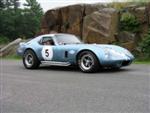 |
CC Member

|
|
|
Join Date: May 2004
Location: Rehoboth Beach,
DE
Cobra Make, Engine: FFR Daytona Coupe done to replicate CSX-2299 at the '64 LeMans
Posts: 641
|
|

 Not Ranked
Not Ranked
David,
The more I learn about you and your operation, the more I am impressed......Here is a guy that asks a question about compounding his car and you take the time out of what has to be a very busy day, and answer his question with thought, knowledge and detail.
Some day when I decide to get another cobra, it will be one of yours for many many reasons, but none any more important than knowing the kind of person I will be dealing with.
Rob Burton
|

02-12-2005, 08:53 PM
|
 |
CC Member

|
|
|
Join Date: Mar 2001
Location: Provo,
Ut
Cobra Make, Engine: Kirkham, 427
Posts: 6,990
|
|

 Not Ranked
Not Ranked
Rob,
Thank you for your kind words. It was really nothing. It was sort of like this horrible flashback nightmare because I have stood there in his same shoes wondering what to do. I just wanted to save him some of the pain.
David    |

02-12-2005, 09:19 PM
|
 |
Senior Club Cobra Member

|
|
|
Join Date: Jan 2004
Location: McAlester,
Ok
Cobra Make, Engine: Lonestar LS427, Keith Craft 496 Genesis, 649 hp, 668 ft-lb, TKO-600, Dynatek Stack EFI
Posts: 204
|
|

 Not Ranked
Not Ranked

40K
Having just recently finished the final sanding on my car, I can give you the procedure that worked best for me. The finishing process is 7 step process to get a show finish, and if the body shop says they can do it in a day, then the results would not satisfy my pickyness. It's slow and hard work, but the results speak for itself.
I did try the 3M Trizact/Hookit II system for a DA on my doors and while it worked OK, IMO it was actually slower than doing it by hand. You didn't mention it, but I'm assuming that you are finishing a basecoat/clearcoat paint. If so, here are my procedures. The part numbers listed are those for 3M products.
1) Wet sand with a hand backing pad using 1200 or 1500 grit paper. My orange peel was preatty severe so I used 1200. The 1500 takes longer and tends to leave low spots where extra time is spent in certain areas.
2) Wet sand by hand (no backing pad) with 2000 grit paper. This step will greatly reduce compounding time.
3) Machine compound with 5936 Perfect-It III Extra Cut Rubbing Compound with a 5703 Superbuff double-sided wool pad. Be sure not to exceed 2000 RPM with your buffer or excessive burning can occur. I will do a 2 x 2 area and use two passes it this step. Use a spray bottle filled with water and give the pad a squirt occasionaly to help keep it from clogging. Clean surface with wax and grease remover to remove left over film and abrasives.
4) Machine compound with 5933 Perfect-It III Rubbing Compound with a 5723 Hook-it foam compounding pad (white) using the same procedure as above.
These steps should completely remove the sand scratches leaving only swirl marks from the compound.
5) Machine glaze with Perfect-it III Trizact Machine glaze with 5725 Hook-it foam pad (black). This step will remove the swirl marks and one pass is normally all that is needed.
6) Finish glaze with Perfect-it III Finishing Glaze with a 5739 Hook-it II pad on a DA. This step will leave a mirror finish on the paint.
7) Finish with wax of preference. I used the new Meguires NXT Generation wax and really like the results.
If you do sand or burn through the clear it is best to stop and apply more clear since you cannot touch or buff the basecoat. I personally do not like the foam pads in the first compounding step since it tends to leave dimples in the finish, or at least it does when I do it.
Hope this helps. Its really hard work and easy to screw up, but if you take your time should work out well. The 3M website has a step by step procedure also.
Brad W.
__________________
A good friend will come and bail you out of jail...but, a true friend will be sitting next to you saying, "Damn...that was fun!"
|

02-12-2005, 09:48 PM
|
 |
CC Member

|
|
|
Join Date: Feb 2004
Posts: 149
|
|

 Not Ranked
Not Ranked
Excellent, just what I'm looking for. David and Brad I can't begin to tell you how much I appreciate both of your replies. Thanks to both of you.
Rob if I had to do it all over again I am certainly in agreement with you.
|

02-13-2005, 10:59 AM
|
|
CC Member

|
|
|
Join Date: Mar 1999
Location: TACOMA,
WA
Cobra Make, Engine: Everett Morrision FE 427 so 2-4s
Posts: 2,025
|
|

 Not Ranked
Not Ranked

I'm looking over your shoulder.I'm repiaring rock dings and such in a white urithane paint on an older fiberglass car. Local body supply store said the little can I have is old stuff. Can says GlasUrit 21 Glassodur Urethane Acrylic . Written by hand 88 Mazda 140 Crystal White (21M60). The #21 was the indicater saying they thought this brand was up to# 24 latley.
I had two places where something came from under or back side and caused a problem.One is over the left front wheel. It looks like a spider with five 1 inch leggs from a central spot. I tried to touch up and sand out but everything came through.Now, I sanded out the leggs and center with a sanding pencil from "Griot's Garage", Then refill with paint. I'll wait till Monday or Tuesday to wet sand with 1000 and foam hand sanding block. Once I get the paint built back up. I'm armed with a new Porter-Cable ramdom orbital electric buffer and a new Chicago Pneumatic 720IP 3" polisher. I get tired easier latley.
I have the usual dings on the lower front of the rear fender flares. The front of the car near the turn signals. I have the Invince-a-sheild spats rolled out flat in a container , still waiting for informative vidio that was supposed to come with to explain how I can get the material to stretch to form to curve in two directions.All the stuff it takes to work on and and maintain these cars almost requires a small wharehouse.I tried to store overhead in garage attic.Car is dead in garage and you can't get to the stairway. I plan on a shed this summer.
__________________
Mike H
Last edited by Michael C Henry; 02-13-2005 at 11:06 AM..
|

02-13-2005, 11:41 AM
|
|
CC Member

|
|
|
Join Date: Nov 2000
Location: Houston,
Tx
Cobra Make, Engine: Unique FIA
Posts: 2,064
|
|

 Not Ranked
Not Ranked

40K,
I didn't read all of the advice here, So I apologize in advance if it has already been mentioned.
You can have the best materials in the world, but if you don't know the proper TECHNIQUES, you are wasting your time.
DO NOT WET SAND IN A SWIRLING MOTION. Wet sand the car in straight parallel strokes aligning the stroke along the longitudinal axis of the car (front to back) Maybe you are swirling???
When you are compounding the car the same applies: (whether it be by hand or with the buffer) work the same direction as the sanding. Think of the car as being a piece of wood that has the grain running from front to back. Every step should "go with the grain"
Wet sanding and polishing a car is not something that can be easily taught with words. If I were you, I would go to a body shop walk directly over to the employees tell them about your Cobra (bring pictures to get 'em interested) and see if you can get one to come over your house after work and teach you. I'm sure there is someone out there that would do it just because they think your car is cool.
While your at the shop, ask them if you can take a hood or something from the pile of crashed parts out back. Practice on that instead of you car. get a black one if possible. If you can polish a black car you can polish anything.
Oh, and remember "don't do the edges they do themselves" I can still hear Otto (my old boss) saying that to me 
Steve
__________________
All my ex's live in Texas
Last edited by Steve R; 02-13-2005 at 12:19 PM..
|

02-13-2005, 12:21 PM
|
|
CC Member

|
|
|
Join Date: Aug 2003
Location: Gilbert,
AZ
Cobra Make, Engine: Backdraft #90, 351w,Tremec 3550, SB100 SOLD
Posts: 577
|
|

 Not Ranked
Not Ranked

40K,
Once you get past the sanding stage (if you burned through the paint, reclear that area, at least!) you might consider the following:
(BTW, Using up to 2000 grit saves alot of compound work and potential burnthrough later.)
All of the previous messages offer good advice. Just be aware of a couple of things. First a glaze is a temporary "fix" to scratches. It fills in the valleys left from sanding, compounding, etc. with essentially a "sugar compound". It makes the car shine really well for about a week or until the first washing or exposure to sun. Body shops use them to make your car look incredibly shiny when you pick them up. Most shops will tell you not to wax your car for 2-3 weeks after painting. If your car loses some of it's gloss, many shops will apply another glaze in the mean time. So, if your paint is really fresh, you might want to wait awhile, perhaps up to 30 days before waxing or sealing your car's finish. Even with today's 2 part urethane clearcoats, there is a "curing" time involved. This allows any residual solvents to "offgas" and evaporate. You don't want to trap them under wax.
There are hundreds of great products out there to bring your finish up to a great shine. I would suggest staying with one manufacturer's brand throughout the process. Most have spent a bunch of time and money making sure their "system" produces good results. If you combine several brands of products, you may be causing extra work if not a potential big mess!
That being said some systems are simpler than others and involve fewer products to buy. 3M usually involves buying the most products to achieve their best finish. Their products are excellent, but there may be more $$ involved and more work. Some brands are now offering excellent finish results with as little are 2-3 steps. You might check with your local auto paint store to see what they recommend. They should have the latest products with the newest technology to make it easier for you.
Good luck!
If you have burned

|

02-13-2005, 01:33 PM
|
 |
CC Member

|
|
|
Join Date: Feb 2004
Posts: 149
|
|

 Not Ranked
Not Ranked
Called the local NAPA to see what they recommended. Spoke with their paint Guru at some length. He suggested I bring the hood in and he will show me how to do it and with what I should do it with. Turns out he has worked for the same "Famous" individual that paints "Fire" that appeared on TLC a few months back. He also said if you can wet sand a black car to perfection you should also run for office.
|

02-13-2005, 07:27 PM
|
|
CC Member

|
|
|
Join Date: Aug 2003
Location: Gilbert,
AZ
Cobra Make, Engine: Backdraft #90, 351w,Tremec 3550, SB100 SOLD
Posts: 577
|
|

 Not Ranked
Not Ranked

40K,
If you want to jump in and learn an old technology that is very popular in Europe and the Far East, I would suggest finding a product line called Farecla. Yep, a French name for a product made in England, but is newly available here in the USA. There are only 3 products involved to bring your paint from 1500-2000 grit wet sanding to an outstanding shine without glaze. And, the bonus is you use only use 2 of the 3! Most guys outside of the USA are familiar with Farecla, except in France where the goofs over there won't sell it even with a French name! Of course the French are above all the rest of us!
The advantage is that you can start with a white foam pad (usually) and end with a black foam pad. So, only two pads and two products. Plus the stuff is water based, so it cleans up easily with water, (Try using water to clean up most other products!) and while buffing it can be reactivated with a spray of water. Sound too good to be true. Well, its not! Ask about any British or Australian guy here in the US and they will rave about it. Oops, I forgot our Canadian buddies. They have used it for years too.
If you have a very fresh paint job, I would buy Farecla, G4 and also G10. These are the compounds. Get their pads or "mops" as they are called in England. Start with a very small amount of G4 on a moist white foam pad. Work about a 2 sq. ft area at about 1500-2000 rpm on an electric buffer. If the buffer starts and dries a little then judders a little bit, spray a small amount of water on the panel and buff again. When if looks good, move on. Then when you are all finished, change to a black pad (mop) and use G10 to finish the job. Don't forget to keep the pads moist, not wet. You will be amazed at the incredible shine you get without a glaze! Also, use small amounts of this stuff. Practice on an old panel before you try your car, if you can find a freshly painted hood or something from a bodyshop.
It is different than most products sold here in the US. Once you get used to it you won't use anything else! It is primarily used for new paint jobs, and not old tired paint. If your paint is a little old, you may want to try G3. It is the most aggressive of their products. With G4 being intermediate and G10 being a very fine finishing compound. All of them are self refining. This means as you use the polisher, the compound breaks down and becomes finer.
Amazing stuff, and not well known here. But, very well known in other parts of the world. I would think your NAPA guy can get some for you from his local WD.
And yep, I have sold this stuff for several years. Even though I would make nothing off of your trying the product, I might stand to benefit if everyone loves it and it becomes big on the west coast! All I know is that is works well and uses no glaze! The Europeans think we are nuts using a glaze as it just temporarily masks scratches! So, take a chance and join a cult of Farecla users.
Anyone else out there familiar with this product line? If so, please comment.

|
 Posting Rules
Posting Rules
|
You may not post new threads
You may not post replies
You may not post attachments
You may not edit your posts
HTML code is On
|
|
|
All times are GMT -7. The time now is 07:49 AM.
|


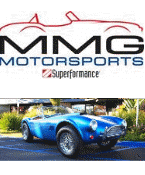


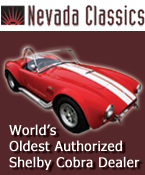

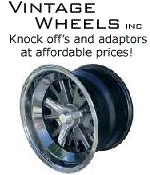


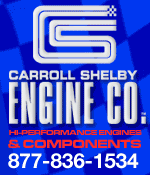







 ).
).

 Linear Mode
Linear Mode



